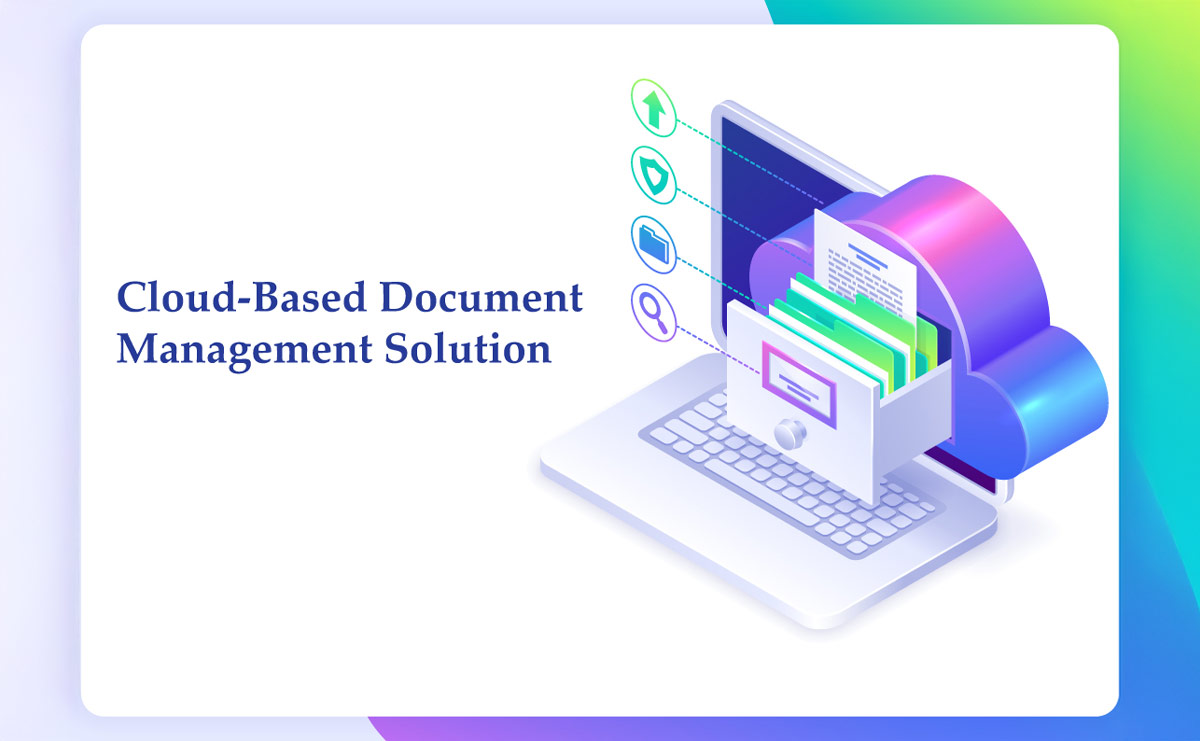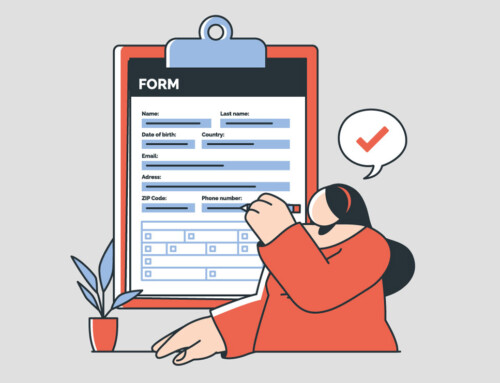Contents
Document Storage vs. Document Management: Choose the Right System
Choosing a suitable document storage solution and safeguarding your files is essential to operational efficiency as well as regulatory compliance. All organizations start somewhere with a question, what is document storage, and how does it relate to broader information processes. Basic systems offer quick access and backup, but advanced tools provide structured support for collaboration, recovery, and security. New document storage systems are simply developed to accommodate minimum needs, but they do not expand with increasing needs. For organizations that need control, automation, and integration, the full document management system provides important benefits.
What Is Document Storage and Why It Matters
I. Defining the Basics: What Is Document Storage
To begin evaluating the right system, organizations must understand the foundational question: What is document storage? Document storage refers to the digital or physical methods used to retain and organize files for future retrieval. This includes local drives, cloud-based folders, or third-party file hosting services that serve as digital filing cabinets. These systems typically focus on static storage, offering limited functionality beyond upload, download, and basic sharing.
II. Primary Use Cases and Limitations
The core function of document storage is preservation. It serves businesses with straightforward needs such as archiving completed projects, storing scanned records, or retaining compliance documents. However, these systems lack features like role-based access, workflow management, or real-time collaboration. As a result, organizations may encounter inefficiencies when file volume increases or team coordination becomes necessary.
III. How Document Storage Supports Basic Needs
For firms seeking simplicity, document storage solutions offer clear advantages. They are generally easy to set up, affordable, and sufficient for businesses that do not require dynamic file handling. These platforms support secure access and backup, ensuring critical records remain intact and retrievable. However, as operational needs expand, the limitations of storage-only systems may prompt a shift toward more comprehensive document management options.
What Sets Document Management Apart
I. Key Functions Beyond Simple Storage
While traditional storage systems focus on file preservation, document management offers a wider range of operational tools. It includes version control, task assignments, secure user access, and audit trails. These features enable users to monitor changes, assign roles, and track activity within a centralized system. As a result, teams can collaborate effectively while maintaining control over document integrity.
II. Workflow, Tagging, and Collaboration
A document management system like Runsensible is designed to align with business processes. It allows for metadata tagging, automated routing, and real-time collaboration among team members. Unlike static storage models, this approach integrates file handling into daily operations, improving speed and reducing errors. Systems with advanced collaboration tools are essential for departments with overlapping responsibilities or regulatory tracking requirements.
III. Compliance, Access Control, and Security
Firms with strict compliance obligations often require more than basic access to files. Document storage solutions may not meet the security and audit standards needed for legal, financial, or healthcare operations. In contrast, document management platforms support encryption, access logs, and permission-based visibility. These capabilities help organizations protect sensitive data while satisfying internal policies and industry regulations. Understanding this distinction goes beyond asking “what is document storage?”—it involves aligning technology with risk management and workflow needs.

Document Storage Solutions: Features and Benefits
I. Easy File Backup and Recovery
One of the core strengths of document storage solutions is their ability to protect against data loss. These platforms often include automated backups, ensuring that files are recoverable in the event of hardware failure, user error, or cyber incidents. Backup functionality is typically included in both cloud-based and on-premises systems, offering peace of mind for organizations that prioritize data preservation. This feature is especially useful for firms needing to store archived records without frequent access.
II. Space-Saving and Cost Efficiency
By digitizing physical records and organizing them in virtual environments, businesses reduce the need for physical filing systems. This allows organizations to save on storage space, office resources, and long-term archiving costs. Document storage solutions are also more cost-effective than advanced platforms, making them ideal for small firms or teams with limited technical needs. Lower initial investment and minimal training requirements further contribute to their financial appeal.
III. Simple Search and Organization Tools
For teams handling straightforward documentation, basic search capabilities are often sufficient. Users can locate files by name, folder, or date, allowing for efficient retrieval when documents are properly labeled. While these features do not offer the complexity of full document management systems, they serve the needs of many small to midsize operations. Understanding the question of “what is document storage?” begins with recognizing its focus on simplicity and basic file access, without additional layers of workflow or automation.
Core Functions of Document Management Systems
I. Metadata-Based Search and Version History
A defining feature of document management platforms is the ability to index documents using metadata. Unlike simple file name searches, metadata tagging allows for detailed filtering by client, date, project type, or status. In addition, these systems track all document versions, enabling users to review, compare, or restore previous iterations. This ensures content accuracy and accountability across departments and timeframes.
II. Integration with Legal and Office Software
Document management systems such as Runsesnible are designed to integrate with common business applications, including email platforms, billing tools, and practice management software. This integration streamlines operations by allowing users to create, send, or archive documents without leaving their primary workspace. These capabilities exceed those of traditional document storage solutions, which typically operate as standalone repositories. Seamless data flow across platforms improves productivity and reduces the risk of duplicate entries or manual errors.
III. E-Signatures, Audit Trails, and Permissions
Advanced systems support built-in e-signature functionality, allowing documents to be signed, timestamped, and validated within the platform. Audit trails provide detailed records of who accessed or modified a file, which is essential for compliance with regulatory standards. Permission settings let administrators control access by user role, reducing the likelihood of unauthorized changes or data exposure. For organizations asking, “what is document storage?” and how it compares to management tools, these security and compliance functions highlight a significant distinction.
Comparing Document Storage Solutions vs. Document Management
I. User Experience and Interface Differences
The design and usability of file systems directly affect how efficiently teams can manage documents. Document storage solutions typically offer straightforward interfaces focused on folder structures and manual uploads. These platforms are easy to navigate but may lack real-time editing, integrated comments, or automated tasks. Document management systems, by contrast, prioritize interactivity and workflow alignment, supporting dynamic features within a unified interface that aligns with day-to-day operations.
II. Scalability and Customization Options
As organizations grow, so do their data volumes and collaboration requirements. A key limitation of traditional platforms is their restricted ability to scale or adapt to complex structures. Document management systems are built for scalability, allowing businesses to expand storage, integrate additional tools, and customize permissions or templates. Firms initially asking, “What is document storage?” often find these systems more suitable when planning for long-term growth or regulatory change.
III. Long-Term Value for Growing Organizations
Cost-effectiveness must be considered beyond upfront pricing. While document storage solutions may be less expensive initially, they often require manual workarounds or multiple disconnected tools to meet expanding needs. Document management platforms deliver higher value over time through reduced administrative effort, stronger compliance, and improved team coordination. For growing businesses, this efficiency translates into better service delivery and more consistent operations.
When to Choose Document Storage or Document Management
I. Small Firms or Basic Record-Keeping Needs
For organizations with limited digital activity and simple documentation requirements, a basic system may be sufficient. Firms that only need to save and retrieve contracts, forms, or archived data may benefit from learning what is document storage and how to implement it efficiently. These platforms offer reliable access and protection without the need for extensive technical support. The simplicity and low cost make them an appropriate choice for static storage with minimal user interaction.
II. Firms with Compliance, Collaboration, or Client Access Demands
Organizations subject to industry regulations or those requiring internal collaboration will likely outgrow basic file systems. Document management platforms provide audit trails, granular access control, and live collaboration features that support client interactions and compliance standards. Unlike document storage solutions, these systems allow for real-time updates, automated processes, and role-specific document workflows. This makes them essential for legal, financial, or healthcare operations managing sensitive and time-sensitive data.
III. Budget and Tech-Readiness Considerations
Choosing between these systems also involves assessing financial resources and technical capacity. Document storage solutions are easier to deploy and require less user training, making them ideal for teams with minimal IT support. Document management systems demand more planning, integration, and ongoing administration but deliver higher returns through process automation and scalability. The right decision depends on current needs, available infrastructure, and long-term digital strategy.
Making the Right Decision for Your Organization
I. Assessing Your Current Pain Points
Organizations must begin by identifying existing challenges in handling documents. These may include misplaced files, inconsistent versioning, access delays, or compliance risks. A clear understanding of internal bottlenecks provides direction when evaluating tools. For teams still asking, “What is document storage?”, this assessment will reveal whether basic functionality meets ongoing needs or falls short in critical areas.
II. Matching Features to Team Workflows
Each system should be evaluated based on how well it integrates with daily operations. Document storage solutions support static archiving and individual file access, making them suitable for straightforward record-keeping. In contrast, document management systems align with collaborative work environments where multiple users contribute to, review, and track documents. The closer the software matches the team’s working style, the more value it delivers.
III. Planning for Future Growth and Data Demands
Sustainable technology choices require forward thinking. As organizations expand, they accumulate more data, users, and regulatory responsibilities. While document storage solutions may serve initial requirements, scalability and compliance often become priorities. Document management platforms offer long-term flexibility, supporting integration, automation, and advanced security. Evaluating tools through a future-focused lens ensures that the system selected today continues to support operational goals tomorrow.
Choose Smart: Align Your System with Long-Term Goals
Selecting between storage and management tools depends on your firm’s operational complexity and future plans. For teams that primarily archive files and retrieve them occasionally, document storage solutions offer a simple, cost-effective option. These systems provide secure backup, basic search, and straightforward access, making them ideal for organizations with minimal collaboration or regulatory demands.
However, if your team requires structured workflows, access controls, and system integration, a full document management platform delivers greater value. Beyond asking “What is document storage?”, organizations must consider how documents are created, shared, and tracked over time. Aligning technology with both immediate needs and strategic growth ensures operational efficiency, data security, and regulatory compliance at every stage.
Unlock Full Control with Smart Document Management
RunSensible gives you more than just storage—it delivers a complete document management system built for modern law firms. With features like automated filing, searchable tags, version control, and built-in e-signature tools, your team can access, edit, and secure files with ease. Whether you’re collaborating across cases or meeting compliance standards, RunSensible provides the flexibility and control you need.
If you’re exploring document storage solutions or still wondering what document storage is versus full document management, RunSensible bridges the gap with an all-in-one platform. Start your free trial today to streamline your workflows, improve client service, and ensure your firm’s files are always organized, accessible, and secure.
FAQs
1. What is document storage, and how does it differ from management systems?
Document storage refers to the basic saving and organizing of files, typically in folders either locally or in the cloud. Unlike document management systems, it lacks advanced features like version control, audit trails, and collaboration tools.
2. What are the main benefits of document storage solutions?
Document storage solutions provide a simple, secure way to archive files for future access. They are cost-effective, easy to implement, and ideal for organizations with basic storage needs and minimal workflow complexity.
3. How does document management support compliance and security?
Document management systems include features such as role-based access, encryption, audit logs, and retention policies. These tools help organizations meet industry regulations and reduce the risk of data breaches or unauthorized access.
4. When should a business move from document storage to document management?
A business should consider upgrading when its storage needs evolve into workflow management, collaboration, and compliance tracking. Document management becomes essential when multiple users need to access, edit, or audit documents within structured processes.
References
- https://www.docuvantage.com/blog/document-management/document-management-vs-document-storage
- https://www.suitefiles.com/blog/document-storage-vs-document-management-which-is-right-for-your-business/
- https://start.docuware.com/en-gb/blog/document-storage
- https://www.papermark.com/blog/document-storage
- https://www.kraftbusiness.com/blog/digital-document-storage/
- https://www.recordnations.com/articles/electronic-document-management-cloud-vs-dms/
- https://www.docupile.com/document-storage-vs-document-management-and-major-differences/
- https://www.hyland.com/en/resources/terminology/document-management/document-storage-software
Disclaimer: The content provided on this blog is for informational purposes only and does not constitute legal, financial, or professional advice.







